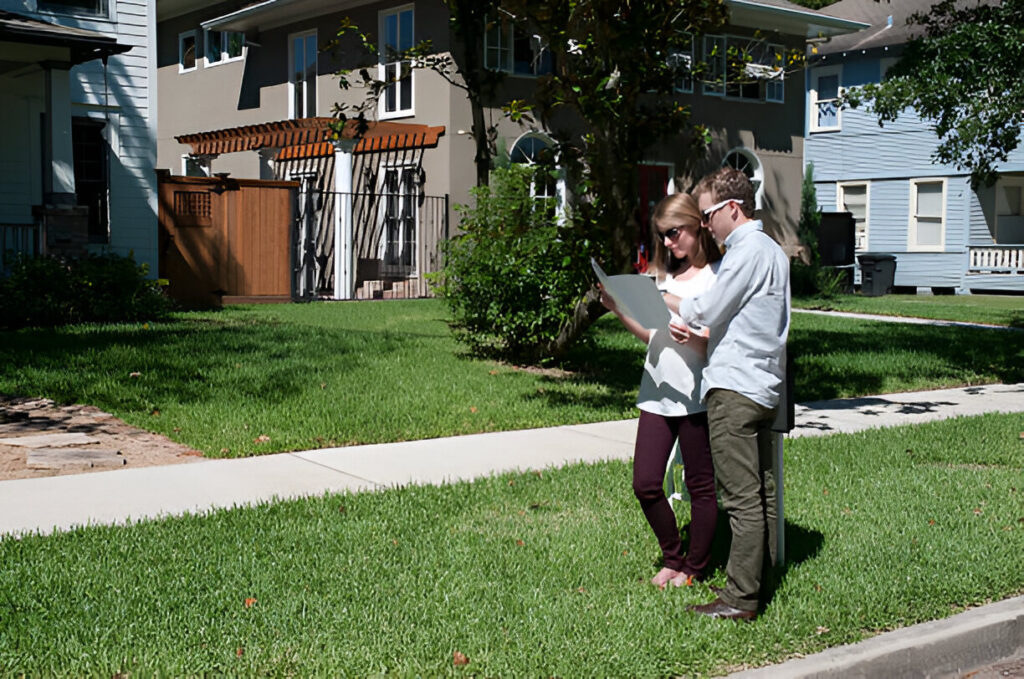Table of Contents
- A Fresh Perspective on Suburban Living
- Proximity to Nature
- Sense of Community
- Cost of Living Considerations
- Educational Opportunities
- Commuting and Transportation
- Lifestyle and Leisure
- Future Trends in Suburban Living
A Fresh Perspective on Suburban Living
In an era where urban life is often synonymous with hustle and bustle, many individuals reevaluate their living situations. The allure of suburban areas lies in their unique blend of tranquility, a robust sense of community, and proximity to essential amenities. Suburbs present an appealing alternative, offering more expansive spaces and a lifestyle that balances work and leisure effectively. The decision to move to a suburb goes beyond merely selecting a place to reside; it’s about embracing a holistic lifestyle shift that integrates comfort with convenience and community. With this shift comes a reassessment of priorities, where access to nature, close-knit communal ties, and quality education take center stage. The transition requires weighing multiple facets of suburban life to understand how they contribute to an enhanced quality of life. This article delves deeply into these aspects, providing insights and practical considerations for anyone contemplating a move beyond the city limits. Readers will understand what suburban life offers by exploring educational opportunities, lifestyle amenities, and future trends.
Proximity to Nature
A solid connection to nature is often cited as one of the most significant benefits of residing in suburban areas. As more people discover the tranquility of suburban living, exploring options such as West Linn OR Luxury Homes for Sale becomes an inviting prospect. These regions typically abound with parks, nature reserves, and walking trails, making outdoor activities accessible to residents. Studies by the Nature Conservancy highlight how spending time in natural settings can bolster mental health by reducing stress and enhancing mood. For many, suburban living means waking up to the sound of birdsong, enjoying the sight of vibrant autumn leaves, or spending weekends in expansive green parks—all of which contribute to an overall sense of well-being. Beyond emotional benefits, proximity to nature offers tangible health advantages. Numerous studies suggest that time outdoors fosters physical health benefits, such as increased physical activity and better cardiovascular health. Suburban environments facilitate a lifestyle effortlessly interwoven with nature, enabling residents to lead healthier, more balanced lives. Whether it’s a morning jog through a forested trail or a leisurely picnic at a nearby park, the abundance of outdoor space in the suburbs supports solitary and social activities that are difficult to replicate in urban settings.
Sense of Community
The essence of suburbia often revolves around a profound sense of community, which larger urban centers sometimes struggle to nurture. Suburban neighborhoods frequently feature community centers that host events ranging from holiday celebrations to sports leagues and cultural festivals. These regular communal gatherings offer excellent opportunities for residents to form connections and foster enduring relationships with their neighbors. The value of a strong community cannot be underestimated. It provides a support network, promotes shared responsibility, and enhances the overall quality of life. Real-life examples include neighborhood block parties or charity events that unite people and instill a sense of pride and belonging among residents. As such, the social fabric of suburban areas contributes significantly to why many choose to settle in these regions: to enjoy the warmth and support of a close-knit community.
Cost of Living Considerations
Fiscal considerations naturally play a pivotal role in deciding where to live, and here, suburbs often have a compelling advantage over urban environments. Typically, suburban areas offer more spacious homes at a lower cost per square foot than city apartments or condos. Furthermore, the overall cost of living—including housing, taxes, and utilities—tends to be more manageable than bustling city centers. This affordability extends beyond housing to include the costs associated with everyday living, such as groceries, dining, and entertainment. In many suburbs, residents report enjoying a higher standard of living without the financial strain associated with urban life. Therefore, suburban living remains an attractive prospect for individuals and families looking to stretch their budgets without sacrificing quality. In this place, they can have more room to breathe, literally and financially.
Educational Opportunities
The quality of educational institutions is a top consideration for many families when choosing a home. Suburban areas often boast excellent public and private schools, with many offering diverse programs catering to various educational needs. According to reports from Education Week, many suburban school districts are recognized for their academic performance, student-to-teacher ratios, and extracurricular offerings. Additionally, the availability of specialized educational programs, such as STEM initiatives, arts, and language immersion programs, further enhances the appeal of suburban schools. Parents often appreciate the rigorous academics and robust extracurricular activities that suburban schools provide, which are essential to developing well-rounded individuals. As a result, these educational benefits attract families to the suburbs and contribute to the community’s vibrancy and long-term attractiveness.
Commuting and Transportation
While some may assume that living in the suburbs means sacrificing work-life balance due to long commutes, this is not certain. Many suburban areas now offer access to efficient public transit systems and well-maintained roadways that streamline travel to and from urban centers. Moreover, with the rise of remote work, many professionals find they can enjoy the serenity of suburban life without the daily grind of commuting. Technological advancements continue to reshape how people think about commuting, with apps and ride-sharing options further easing suburban transit. This flexibility in transportation solutions means suburban dwellers often enjoy the best of both worlds: a peaceful home environment with the option for an easy commute when necessary, reinforcing the appeal of suburban living in a modern context.
Lifestyle and Leisure
The lifestyle offered by suburban living can significantly enhance one’s quality of life compared to the frenetic pace of urban environments. With more residential space and access to myriad recreational activities, suburbs allow leisure and lifestyle to flourish. Residents often enjoy larger homes with backyards, space for home offices, and areas for entertaining, all conducive to a comfortable, fulfilling home life. Community features such as sports complexes, golf courses, and swimming pools offer residents ample opportunities to partake in leisure activities that promote well-being. This emphasis on work-life balance and leisure is a cornerstone of suburban life, allowing residents the flexibility to cultivate hobbies, socialize, and enjoy family time—all crucial components of a balanced, contented lifestyle.
Future Trends in Suburban Living
Looking to the future, suburban living is poised to gain prominence as more individuals seek environments that accommodate remote work and leisure-based lifestyles. As technological advancements continue to bridge the gap between suburban and urban access, the desirability of suburbs is likely to rise. Furthermore, as populations grow and cities expand, suburbs are expected to offer innovative housing and community planning solutions, accommodating diverse residents and fostering inclusivity. These future trends suggest that suburban areas will not only maintain their appeal but also evolve to meet the shifting needs of their residents. Ultimately, the promise of suburbia lies in its ability to offer a harmonious blend of modern conveniences, community spirit, and a connection to nature—an attractive proposition for those contemplating their next move.

